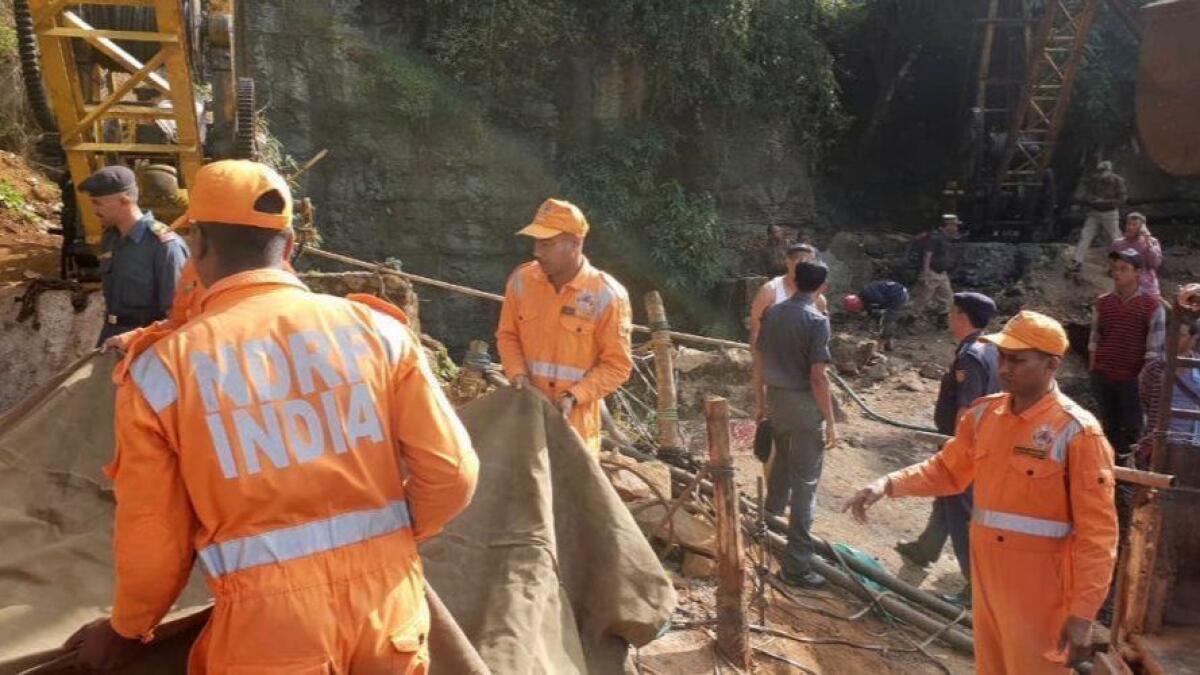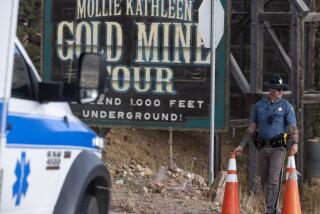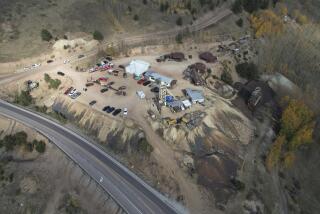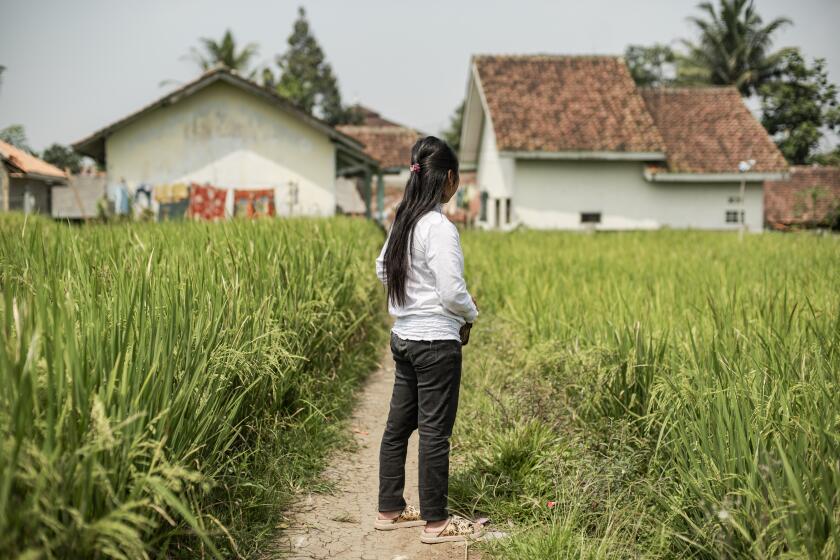Authorities struggle to rescue 15 men trapped inside illegal ârat holeâ mine in India

Reporting from NEW DELHI â The name itself denotes the danger: a ârat holeâ mine.
The tiny, horizontal tunnels â barely wide enough for one person â have long been dug into the hillsides of the mineral-rich northeastern Indian state of Meghalaya. Poor laborers crawl through the seams to extract coal, a practice so risky and environmentally destructive that an Indian court banned it in 2014.
But rat hole mining continues, and its dangers have come into national focus since 15 young men have been trapped inside an illegal mine that flooded two weeks ago.
Six months after Thailand pulled off a dramatic operation to rescue 12 members of a boysâ soccer team and their coach who were trapped deep inside a flooded cave, the story of the miners in Meghalaya has garnered relatively little attention.
The workersâ families have complained to local news media that officials have shown a lack of urgency. This week, local authorities suspended the rescue operation after the state and federal governments failed to furnish high-capacity pumps for drawing out water from the 370-foot mine.
It is unknown whether the miners have any source of oxygen or water. Typically, at work, they would have spent only a few hours inside the mine.
Rescue workers with Indiaâs National Disaster Response Force had been using two 25-horsepower pumps, but water from a nearby river was streaming into the mines faster than the crews could pump it out. Mining experts say the operation needs at least 10 100-horsepower pumps.
âWater has been the biggest hindrance in our operation,â said Santosh Kumar Singh, the response forceâs assistant commandant.
Opposition leader Rahul Gandhi on Wednesday criticized Prime Minister Narendra Modi for failing to arrange the water pumps in time, urging Modi to âplease save the miners.â
About 70 rescue personnel have been on site since the mine reportedly flooded Dec. 13, with 20 workers inside. Five were able to climb to safety.
One 21-year-old survivor told Indian news media that he and his fellow miners knew the ground was soft and that there was a risk of flooding, but they had taken on the job, which pays about $30 per day, to escape poverty.
Workers typically descend into vertical pits before entering the horizontal rat hole tunnels from which coal is extracted. The practice is deadly â 12 miners disappeared inside a rat hole mine in 2012 and were not found â but lucrative, with India still reliant on coal for 60% of its energy needs.
Rat hole mining has long been prevalent in lightly populated Meghalaya, where coal lies in thin underground seams and cannot be extracted by large-scale, open-cast mining.
In 2014, the National Green Tribunal, an Indian court that decides environmental cases, banned the practice as unsafe for workers. Experts say it also denudes hillsides and causes chemicals to seep into bodies of water.
But activists say the illegal mining has continued, often with the knowledge of local and state officials, many of whom are believed to be mine owners.
Singh, the relief official, declined to comment on whether the miners could still be rescued.
âWe have not yet reached the bottom of the pit,â he said. âIt is not considered safe for our personnel to go beyond 30, 40 feet. We donât even have a map or the blueprint of the mine.â
Masih is a special correspondent. Times staff writer Shashank Bengali in Singapore contributed to this report.
More to Read
Sign up for Essential California
The most important California stories and recommendations in your inbox every morning.
You may occasionally receive promotional content from the Los Angeles Times.








